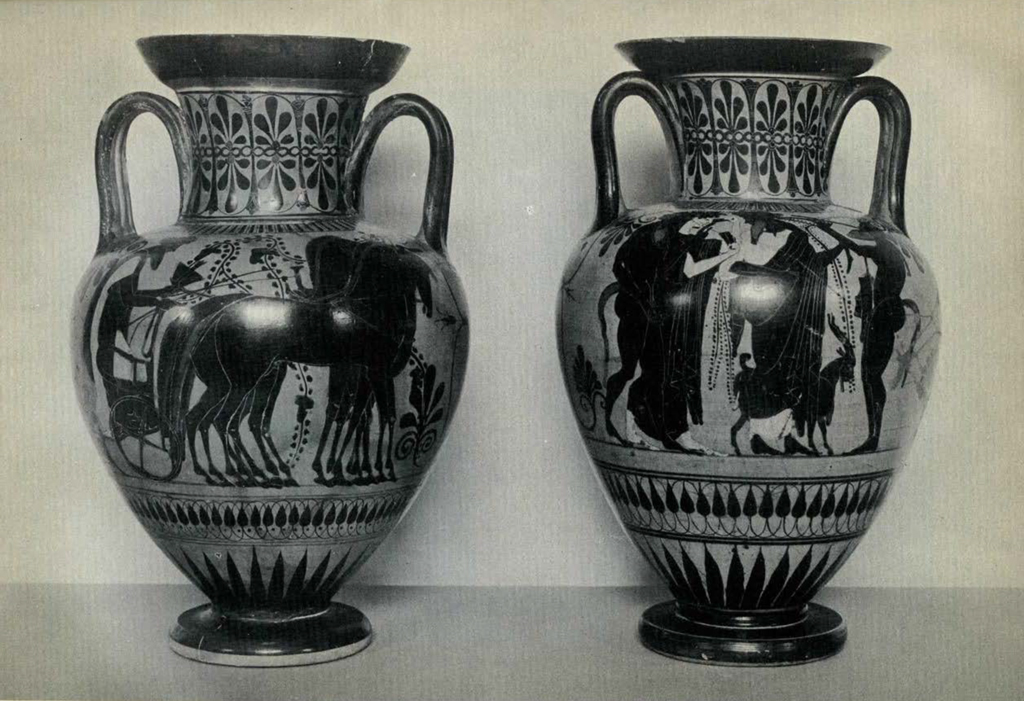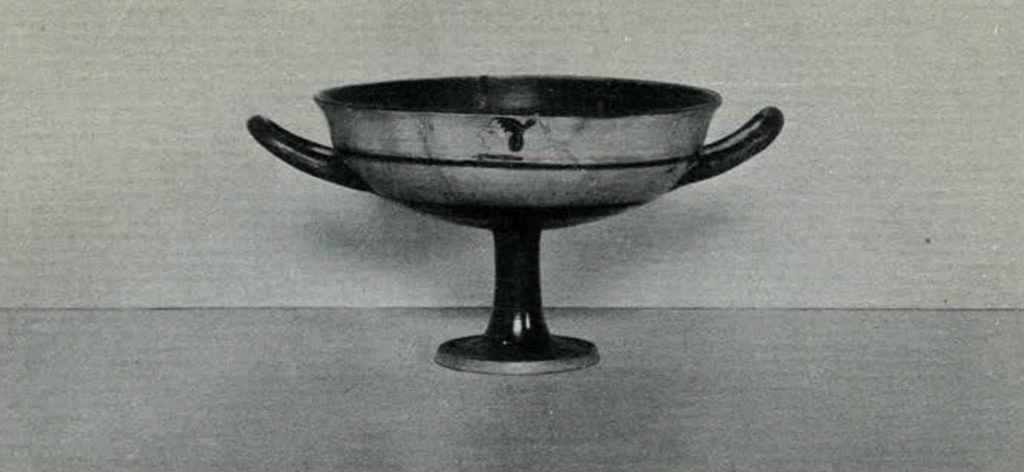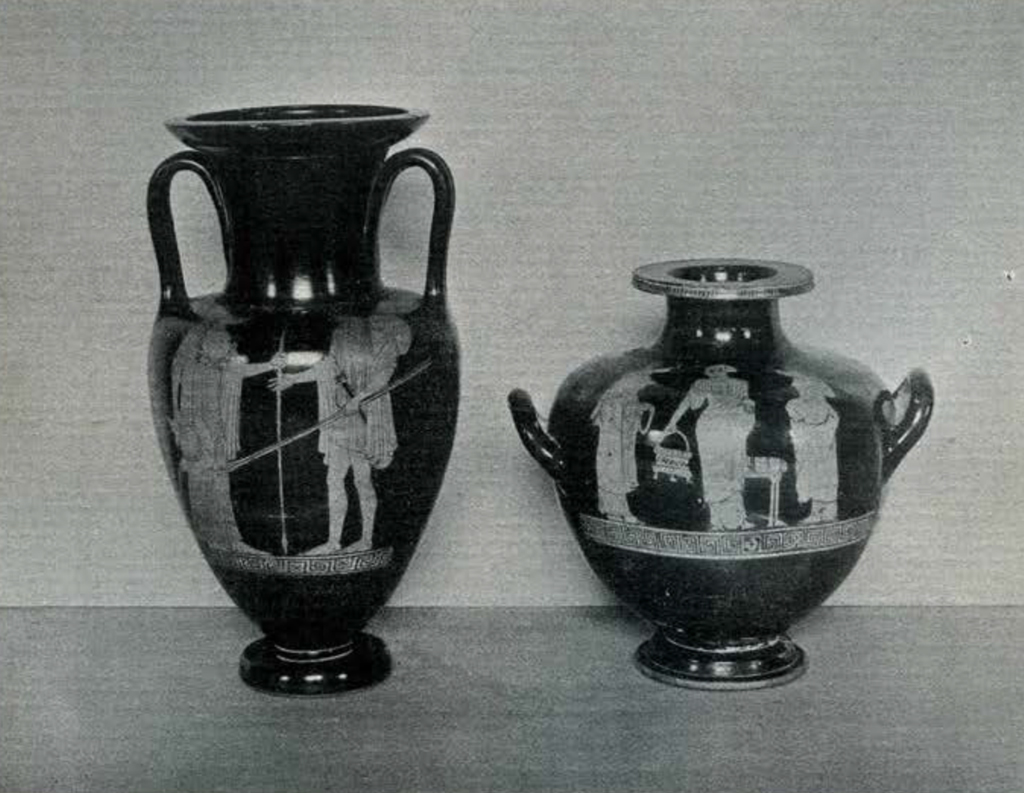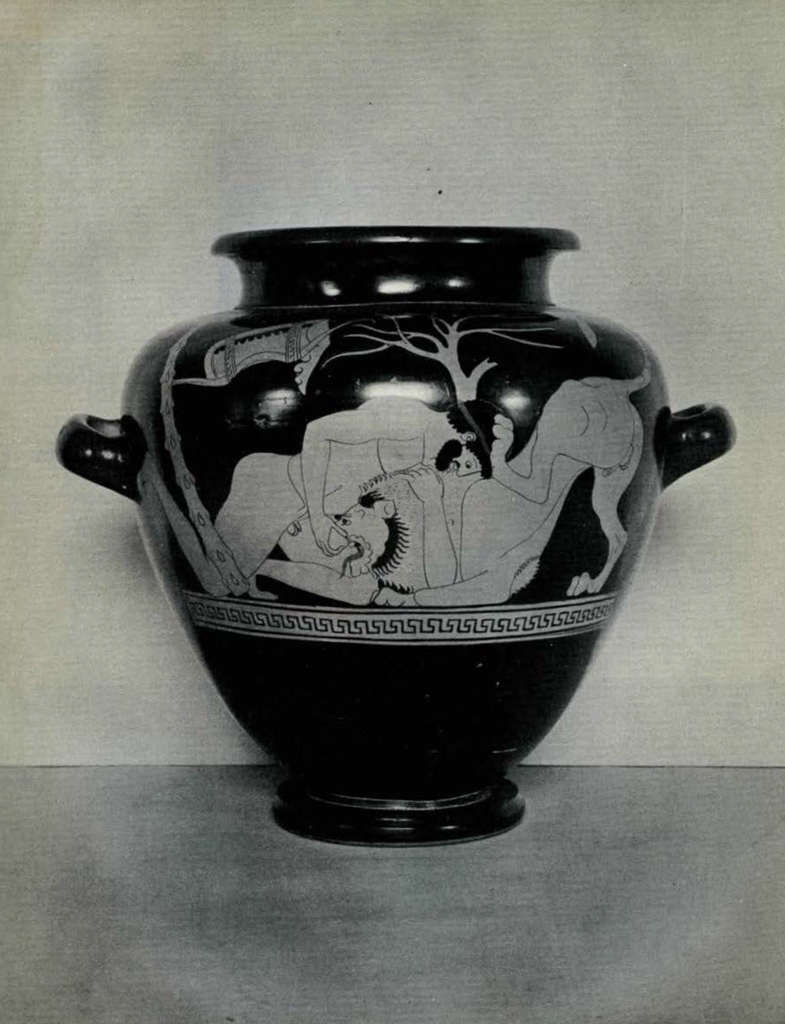THE loan that is described in the following article represents more than a merely satisfactory acquisition to the University Museum’s collections. It signifies more fundamentally, we believe, a conscientious effort on the part of those interested in the general art collections of Philadelphia to effect a logical disposition of the various categories of objects. In exchange for this loan of classical pottery the Museum deposited with the Pennsylvania Museum of Art certain Islamic objects which were agreed to pertain to the scope of its collections rather than ours and to be more useful under their control. On the other hand, the extraordinary wealth of classical pottery in Philadelphia is by this exchange of loans first adequately brought together in one place for the benefit alike of connoisseur, scholar and student.
AN exchange has been effected with the Pennsylvania Museum of Art whereby the University Museum has received as a permanent loan a collection of Greek and Roman vases and terracottas which has for years been housed in Memorial Hall, some few of them exhibited in the gallery of ceramics on the first floor, the greater number, however, stored in the basement.

Museum Object Number: L-64-39 / L-64-259
Image Number: 47072
The nucleus of this collection was due to the generosity of Wm. S. Vaux, who in 1882 bequeathed to Memorial Hall some seventy vases and lamps. This group was increased in 1888 by a gift of Italic vases, and again in 1891 by a gift from Mrs. John L. Harrison of Greek vases and figurines. In 1899 Dr. Francis W. Lewis added some eighty pieces, of which one is the chef d’oeuvre of the collection and others are of great interest. The last and largest gift was made in 1903 by Dr. R. H. Lamborn, who gave a varied collection of vases, lamps, and terracotta figurines. An adequate account of all this material is naturally beyond the compass of these pages, but a description of the more important Attic vases may be of interest both to scholars and to laymen.
First in date is the dainty “little master” cup of Plate IV, from the Lewis collection, with a miniature painting of a woman’s head, done in outline on both obverse and reverse. Below the heads are inscriptions, apparently meaningless, added for decorative effect. The cup belongs to the black-figured period and to the earlier phases of this period between the years 560-530 B. C.
Scarcely later in date than the end of this period are the two neck-amphorae of Plate III. The awkward term, “neck-amphora” is used to distinguish this type of amphora from a type in which the neck merges gradually into the shoulder. There is no more popular subject for the decoration of neck-amphorae than Dionysiac scenes such as those painted on these two vases. On the vase at the left in Plate III, which comes from the Lewis collection, Dionysos, clad in a long white chiton and black himation, a kantharos in his hand, mounts his four-horse chariot; in the background are branches of the fruitful vine sacred to the god. In the other vase, from the Lamborn collection, Dionysos, similarly clad, moves to the right, a goat at his side, a satyr and maenad with castanets following behind. His approach is heralded by a second satyr with music from the double flute, the case for which is hung on his arm.

Museum Object Number: L-64-182
Image Number: 2833

Museum Object Numbers: L-64-40 / L-64-41
The marvellously preserved stamnos of Plate V was once in the possession of Joseph Bonaparte, and the presumption is that it was acquired by him while King of Naples. In contemporary descriptions of Joseph Bonaparte’s house at Bordentown mention is made of vases in the library, but no descriptions of them are extant. The subsequent history of our stamnos, however, can be traced; when Joseph Bonaparte left Bordentown for France, he gave this vase to Dr. Nathaniel Chapman, and at the sale of the latter’s effects, after his death, it was bought by Mr. Edward S. Clarke, and afterwards sold by him to Dr. Francis Lewis, who gave it to Memorial Hall. The vase was attributed some twenty years ago by Professor Beazley of Oxford to one of the two great painters of the ripe archaic period, an artist whose name is unknown but who is called after the name of the potter who made one of his most famous vases-the Kleophrades Painter. His style is characterised by a monumental, sculpturesque quality, and by masterly composition, as can be seen by a glance at the illustration. Herakles is wrestling with the Nemean lion; his right hand grasps the lion’s jaw, a leg of the monster is pressed against his head. On the tree in the background is hung his bow and quiver, and to the left may be seen his huge knotted club. Between the tree and Herakles’ shoulder is written: “thou art beautiful.” On the reverse of this stamnos is painted a picture of Theseus wrestling with the Marathonian bull. The vase dates from about 490 B. C.; it is the first work of the Kleophrades Painter to be shown in our galleries. Two vases by his great contemporary, the Berlin Painter, have been acquired in recent years, and the acquisition of this vase will now make it possible for the visitor to the Museum to compare the styles of these masters.

Museum Object Numbers: L-64-185
Image Number: 2987
A pupil of the Berlin Painter is the Providence Painter, two of whose vases were shown recently in the loan exhibition of the Gallatin collection. At the lower left in Plate IV is shown an admirable example of this master’s work from the Vaux collection. It is painted on a Nolan amphora and represents Athena and a young warrior, a delightful picture, although it will readily be seen that the power and grandeur of the Kleophrades Painter is gone. This vase dates from about 470 B. C.
A still later phase of red-figured vase-painting is seen in the work of the Penthesilea Painter, three of whose paintings are preserved in Philadelphia. There is a cup from his hand in the possession of the Philosophical Society, which, like the red-figured stamnos, once belonged to Joseph Bonaparte, and another cup in our Museum. With the accession of the third, the vase shown in Plate IV, lower right, we acquire the only hydria as yet attributed to the Penthesilea Painter. It represents a pleasing interior scene of three women in conversation, and dates from about 450 B. C. This vase also comes from the Vaux collection, and like the other vases in this new acquisition is beautifully preserved.
E.H.D.

